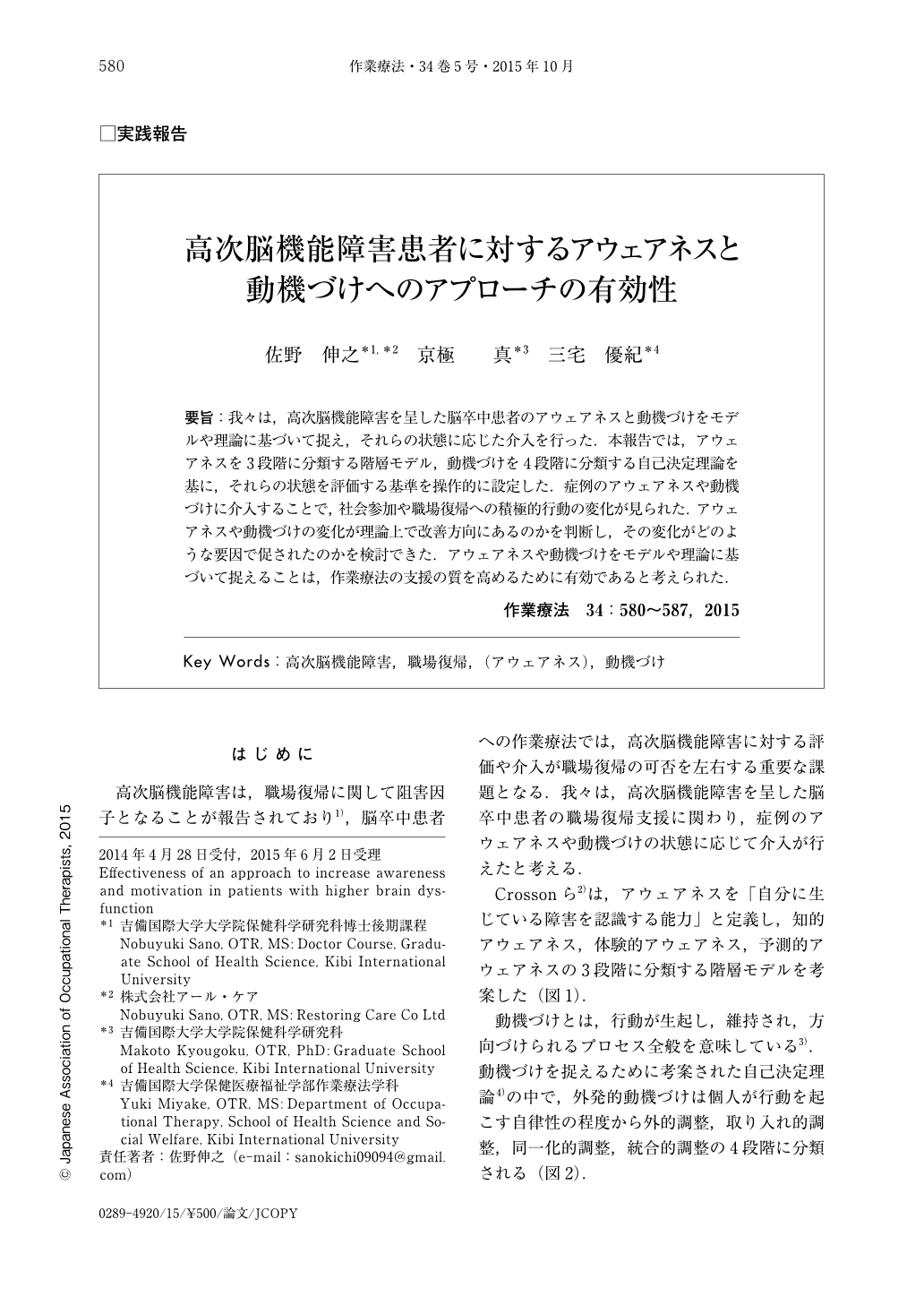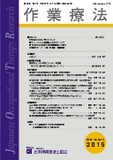Japanese
English
- 販売していません
- Abstract 文献概要
- 1ページ目 Look Inside
- 参考文献 Reference
要旨:我々は,高次脳機能障害を呈した脳卒中患者のアウェアネスと動機づけをモデルや理論に基づいて捉え,それらの状態に応じた介入を行った.本報告では,アウェアネスを3段階に分類する階層モデル,動機づけを4段階に分類する自己決定理論を基に,それらの状態を評価する基準を操作的に設定した.症例のアウェアネスや動機づけに介入することで,社会参加や職場復帰への積極的行動の変化が見られた.アウェアネスや動機づけの変化が理論上で改善方向にあるのかを判断し,その変化がどのような要因で促されたのかを検討できた.アウェアネスや動機づけをモデルや理論に基づいて捉えることは,作業療法の支援の質を高めるために有効であると考えられた.
Using theories of awareness and motivation to elucidate awareness and motivation of a patient with higher brain dysfunction we intervened by establishing operationally the standards based on two theories for accurate assessment of those characteristics: the pyramid model, which classifies awareness into three phases and the self-determination theory, which classifies extrinsic motivation into four phases. Through our intervention in the awareness and motivation of the patient, the patient developed positive actions for social participation and returned to work. We determined that the change in awareness and motivation was progressive, and that the assessment based on the theories of awareness and motivation is effective at improving quality of support in occupational therapy.

Copyright © 2015, Japanese Association of Occupational Therapists. All rights reserved.


